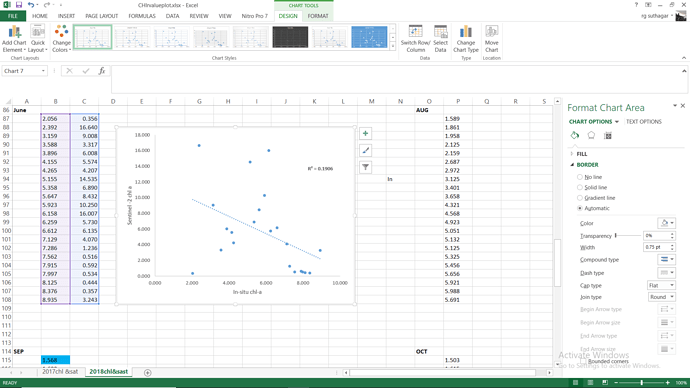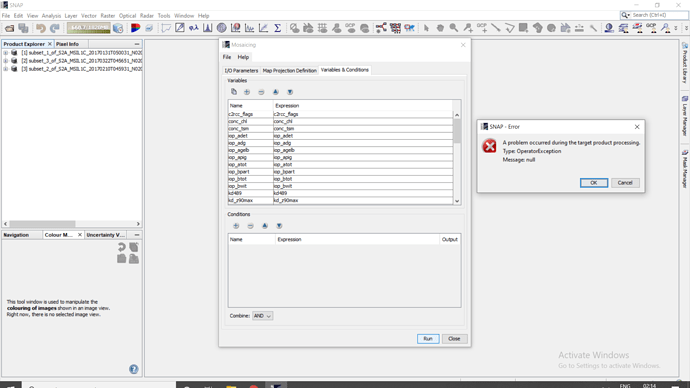If it is not available, you would need an atmospheric correction software. The common choice would be Sen2Cor plugin to SNAP (also possible to use stand-alone on command line). This should create the same product you would download from SciHub. Download here
https://step.esa.int/main/third-party-plugins-2/sen2cor/
and make sure you read the documentation. In case you run into problems, search this forum for Sen2Cor, because here is wast number of problem solving discussions - narrow the search also to version you use.
There are also alternative ways to do atmospheric correction, and the second obvious choice to try is iCOR-sentinel2-sta if you use SNAP, as it is available through “Tools/Manage external tools” menu in SNAP. I did not try iCOR yet, Sen2Cor works, but may not be that obvious to operate properly at first.
Without C2RCC processer For sentinel-2 chlorophyll-a and TSM estimation anyother mathod available by using SNAP?
I am not aware of other tool specifically for computing chl-a or TSM in SNAP, but you can of course use the Band maths tool in to try any algorithm based on band math published in scientific papers. In most cases you need L2A product (downloaded or created in SNAP from L1C), need to make sure all bands in the algorithm are rescaled to common resolution, then apply the formula from the paper.
Actually, if you are working on inland water bodies with chl-a content mostly in range 0-60(100) ug/l, you can even try my own algorithm for chl-a from article:
Brunclík, T., Danquah, K. a. B., 2018. Relativní radiometrická normalizace pro monitoring chlorofylu-a ve vodách pomocí družice Sentinel-2. Chemické listy 112, 866–869. (http://www.chemicke-listy.cz/ojs3/index.php/chemicke-listy/article/download/3244/3215/)
The article is in Czech, unfortunately.
The formula is: chl_a = 59.1770 * (B05/B04)^2 - 77.2041 * (B05/B04) + 23.2527 , where B05 and B04 are bands 5 and 4 of Sentinel-2 L2A image
and I would be curious if it gives reasonable results outside the area it was developed on. I additionally use a relative radiometric normalization on the L2A image, but for clean imagery (minimal cloud cover, no uncorrected residual haze) the algorithm works with satisfying precision without it for me.
I personally use GRASS GIS or QGIS for the computation, where it is is possible to mask out non-water areas or avoid them simply by dividing the whole formula by a water mask band, where water is 1 and land 0. Division by zero produces no-data value in QGIS, effectively limiting the computation results to water areas only. Not sure if that would work in SNAP, but you can use multiplying by the mask if it does not, getting zero instead of no-data outside water areas.
How do i choose the correct CHL exponent and CHL Factor value for study area
You would need to compare the processing results with in-situ data and then adapt the factors until they fit. Just usual research.
Or @abruescas do you have another suggestion?
How to produce seasonal image from S2-C2RCC processed image
Thank You
With the Mosaicking or the Level-3 Binning tool.
Both to be found in the menu at Raster / Geometric Operations
After mosaicking i tried C2RCC processor but my case it show someError like this.
- Another one query sir How to remove my cloud in my study area -please kindly mention procedure
Is it an option to run C2RCC on all subsets and then create the mosaic?
Sorry for late response
No initially i just tried mosaicking with 3 month raw data and then i run C2RCC processer
…
From the S2-C2RCC image I extracted pixel value of chl-a for the months of August 2018 and others
When i try to compare both in-situ and Sentinel-2 C2RCC Chl-a value Plot like this below
In this case toward land my in-situ chlorophyll value is in increasing order but same time S2 derived chl-a value decreasing order toward land. i think this pattern lead negative trend line ,i would like to know conclusion for this scenario
what may be the reason for decreasing value of chlorophyll-a for sentinel-2 C2RCC
Sametime sentinel-2 images gives me strange value for particular place , -If know the reason please let me know
Thank You very much
C2RCC is a processor for complex waters, so it will depend a lot on the type of water you have your results would be more or less comparable to in situ measurements. C2RCC is also quite conservative with invalid and cloud pixels (you can take a look to the flags in your area using the mask manager). It is difficult to say more without knowing the ROI and conditions of water.
In any case, I would advise to apply C2RCC before mosaicking.
Good morning
I tried mosaicking with C2RCC image but something error showing
And i regarding S2 data my ROI Chl-a C2RCC value where very high at the same time TSM also very high …i tried chl-factor value and all those things but since the data shows higher concentration of chl-a
above image near estuary mouth and boundaries of both side of river always show higher concentration chlorophyll ,but there only a .5 M depth like more turbid water. and sea boundary also show high amount of Chl-a…if anybody know give me some suggestion or what could be the reason for strange value.
Thank you
Target product processing, in most probably cases refers to low memory of machine, but try up to make subset and give a try.
It is quite normal that you find chlorophyll and TSM “high” values in the same area. The river shores and the coastal high values could also be related to the adjacency effect, if your coastal areas are sandy and bright, you will see your nearby pixels “polluted” with that bright values. Bottom reflectance can also add some brightness in your area and be interpreted as CHL or TSM when is only the river bed. So, you have to be careful with the interpretation of your data. If you had in situ values of the area, you could try to validate the C2RCC outputs, and understand better where the errors could come from.
All three images are evenly subsetted.
but after the partially processed image error i could open image but look nothing inside
Thank you madam…since i am confused with term polluted …my ROI area of chlorophyll and TSM cloud shadow also give some value ,is possible to avoid that value of cloud .
good evening , is anybody did Seasonal variation of sentinel -2 chl-a and TSM derived by C2RCC processor for Case II water, If u have available related article kindly please share
Thank You
Dear Mr Marpet,
I am wondering to measure chlorophyll content from vegetation not from water. Is that possible to use C2RCC in snap?
No, this is not possible wth the C2RCC procesor.
But you could use

Only enable the “Compute Cab” option.
This gives you the “Chlorophyll content in the leaf”. Probably this serves your needs.
You find this processor in the menu at Optical / Thematic Land Processor / Biophysical Processor
Very much thank you
Cheers
Lia




